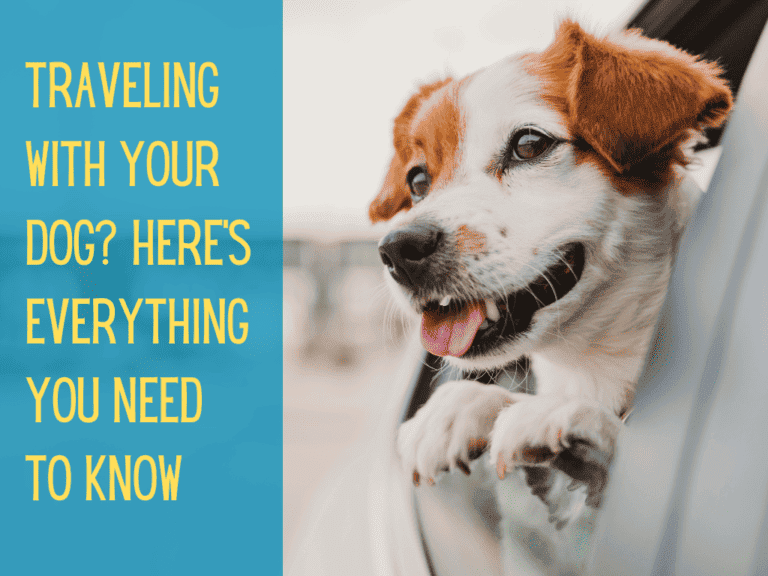How to Potty Train a Dog: 8 Quick & Effective Tips

There’s something special about bringing a new family member home – especially when they’re the four-legged type.
But now you’ve found yourself dealing with the notorious potty accidents, and you’re not sure how to go about it?
Worry not – you’re in the right place!
As a professional dog trainer who has successfully potty trained too many dogs to count, I’m here to help give you some guidance to streamline your potty training progress.
Read on to learn how to potty train a dog quickly and effectively, no matter the age!
How to Potty Train a Dog or Puppy
Taking the time to learn how to properly train your dog will set you both up for success.
- Designate a potty area
- Use a crate
- Supervise your puppy
- Implement a routine
- Reward positive actions
- Practice patience
- Steer clear of potty pads
- Don’t punish your puppy
Now that you have an idea of what you can do with your dog, read on for the details to get started today.
Designate a Potty Area
Select a specific area in your yard as the official potty spot. This will help your dog recognize the appropriate place to relieve itself, offering a consistent and familiar environment. Always lead them to this elimination area during potty breaks. With repetition, they’ll instinctively head to this area when nature calls.
Avoid setting up an indoor potty zone! These promote indoor elimination and can lead to house training challenges.
For apartment dwellers with only a balcony, consider using artificial grass.
Steer clear of puppy pads! They can be messy, promote indoor elimination, and might become your puppy’s new chew toy.

Use a Crate
One of the most efficient potty training methods is crate training. It’s an invaluable tool for instilling good potty habits and ensuring your puppy doesn’t pick up destructive behaviors.
By providing a controlled environment, the crate helps your puppy discern appropriate places for relief and curbs their natural curiosity from leading them into mischief. It’s a dual-purpose solution: guiding them in potty etiquette and keeping them safe from potential household hazards.

Supervise Your Puppy
Adequate supervision is critical during the potty training phase. Allowing your dog to roam freely can result in accidents, hindering your training progress.
Implement crate training when you cannot monitor them, confine your puppy or dog (age doesn’t matter) to a playpen when you’re occupied but still present, or tether them to you with a leash to prevent unsupervised wandering.
Crate-trained dogs often master potty training faster and with fewer accidents because they don’t get the opportunity to go unsupervised.
Implement a Routine
Consistency is everything in potty training. Establishing a regular potty and feeding schedule aids dogs in forming a routine. Scheduled breaks, especially post meals, naps, play, and training sessions, allow them to relieve themselves in their designated area, reinforcing the habit.
While young puppies might need frequent breaks, roughly every 1-2 hours, you can gradually extend the intervals as they develop. Every puppy is different, and some may have a more sensitive bladder, so give your puppy more frequent trips outside as necessary.
Reward Positive Actions
Instead of reprimanding mistakes, celebrate successes. When your dog uses the designated potty area, shower them with praise. If an accident occurs indoors, redirect them outside without scolding them. Avoid outdated methods like rubbing their nose in the mess – this is an ineffective method and can create stress about going potty around you (in the designated spot or not).

Practice Patience
Potty training requires patience, and each dog’s learning curve varies. Celebrate small victories, like successful outdoor potty breaks or signaling when they need to go out. Remember, consistency will lead to good habits and a well-trained pup.
Steer Clear of Potty Pads
Many dog owners fall into the trap of initiating potty training with potty pads, thinking it’s a convenient starting point. However, this approach can severely backfire. Relying on potty pads can inadvertently create a nasty habit of relieving themselves indoors.
This not only complicates but also prolongs the housetraining process. Resist the urge to place potty pads in crates, exercise pens, or any indoor space. Only resort to them when you’re left with no other alternatives.
Refrain from Punishing Your Puppy
Accidents happen, especially with puppies. If the puppy eliminates indoors, approach the situation with understanding rather than punishment. Actions like rubbing their nose in the mess, hitting, or shouting can lead to them associating elimination with fear. This might cause them to sneak away and hide when they need to go, complicating the training process.
If you didn’t witness the act, simply clean up and remind yourself to be more watchful in the future. If you do catch them mid-act, gently interrupt them and quickly take the puppy outside. Once they’ve completed their business outside, reward them with praise.
Additional Tips for Successful Potty Training
- Hire Help for Young Pups: If you’re away due to work and can’t check on your young puppy during lunch, consider employing a dog walker or sitter for midday breaks. If you’re feeling overwhelmed with a new puppy, consider sending them to a puppy board and train program to get a head start on potty and obedience training.
- Frequent Breaks for Tiny Pups: Puppies under three months typically require more regular outdoor visits. You may need to take your puppy outside in the middle of the night for the first several weeks.
- Training Adult Dogs: If you’re potty training an older dog, start as if they’re a puppy. Repetition is the key to ingraining good habits!
- Avoid Comparisons: Every dog is unique. Refrain from comparing your dog’s potty training progress to others. Patience is key.
- Watch for Signs: If your puppy lingers near the door or sniffs around, it’s likely a signal they need to go outside. Always be attentive to these cues.

How long does it take to potty train a dog?
Potty training duration varies but ranges between two to six months on average. Factors influencing this timeframe include:
- The dog’s inherent cleanliness habits
- Early upbringing
- Genetic factors
- The consistency of the training schedule
If potty training seems particularly challenging, it’s advisable to consult a vet to eliminate potential medical concerns.

Key Factors to Consider When Potty Training Your Puppy
Puppies aren’t simply born as clean slates. Keep these factors in mind when training your puppy.
Breed and Genetic Makeup
The genetic background of your dog plays a significant role in potty training. Certain breeds may naturally be inclined towards quicker or more prolonged learning periods in this area. While some breeds might be renowned for their swift learning capabilities, the specific lineage of your dog can also influence this.
Early Environment
The surroundings in which your dog spends its initial eight weeks can significantly influence its potty training journey. During these formative weeks, the tidiness of the environment can shape their understanding of cleanliness.
For instance, a puppy raised in a meticulously clean setting, where the breeder initiates potty training as soon as they begin to walk, is more likely to develop a strong sense of cleanliness. Such a puppy would find potty training relatively straightforward. Conversely, a puppy from a neglected environment may not mind being near its waste.
Frequently Asked Questions
Conclusion
Potty training a puppy is one of the first and most important steps you’ll take together, laying the foundation for a lifetime of companionship built on trust and mutual respect. While the journey may test your patience, remember that every effort brings you closer to a well-adjusted, happy dog who feels secure in their home. Embrace each success and setback as part of the learning process, and always approach training with positivity and consistency.
As you start your potty training adventure, know that you’re not alone. There are countless resources and a community of fellow dog lovers ready to support you.
Looking for more puppy training tips and tricks to ensure a smooth and successful process? Dive into my world of dog care expertise. Subscribe to my newsletter for invaluable advice, insights, and encouragement tailored to help your puppy thrive from the get-go.
Join the Pack!
Sign up for my newsletter and fetch the latest tips, tricks, and industry insights straight to your inbox!






